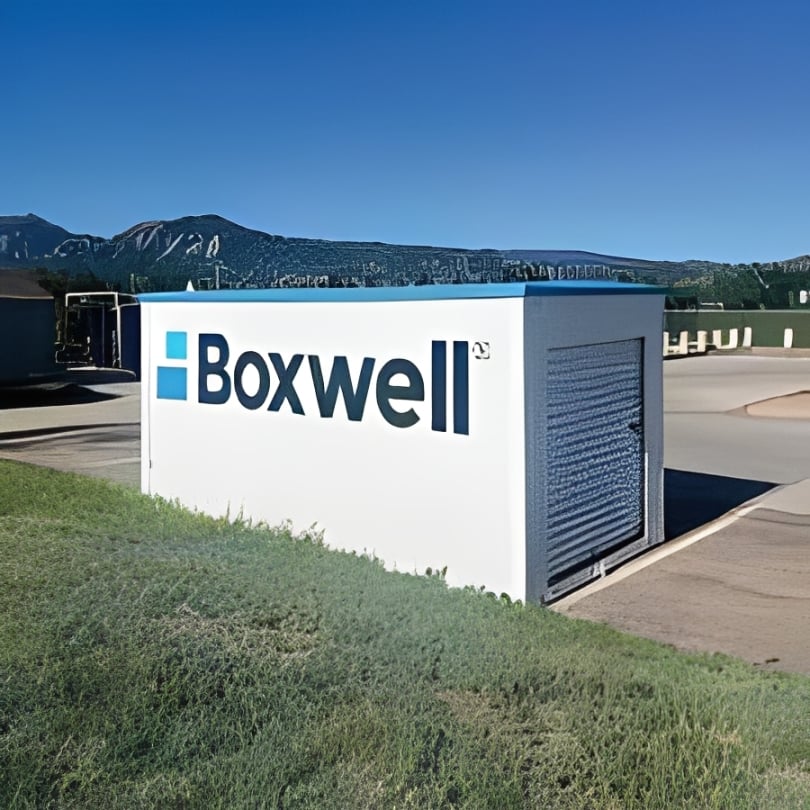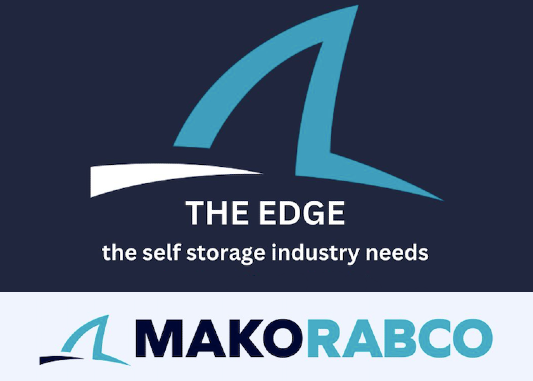Powerful Partnership: The Development Of Trojan Storage
The U.S. Bureau of Labor Statistics reports that approximately 20 percent of new businesses fail in the first year. Even more startling is the agency’s statistic that only half make it past the five-year mark. Reportedly, there are three main reasons businesses fail: no market for the product or service (42 percent), not enough capital or cash flow to sustain the business (29 percent), and poor teamwork and communication (23 percent). It’s also been suggested that businesses founded on friendship are less likely to succeed.
Contrary to that opinion and beating those entrepreneurial odds by having complementary competencies, considerable capital, and ample demand, Trojan Storage, which was established by childhood acquaintances John Koudsi and Brett Henry, is approaching 20 years in business. And thanks to this dynamic duo’s future-focused investments and airtight operations, Trojan Storage has plans to continue growing its portfolio while making meaningful contributions to the industry.

Past To Present
Several years before Trojan Storage was founded, Henry was offered a job with a self-storage operator. Though he had wanted to become a developer upon graduating from the University of Southern California in 2001, he quickly discovered that he thoroughly enjoyed the operations and management side of the business. “I fell into it,” says Henry, who learned the ins and outs of self-storage from the ground up and had plenty of practical experience in various roles. “I renovated properties, lowered expenses, and put operational programs into place.”
By 2005, he was running 12 self-storage facilities for Self-Storage Management Company (SSMC) and supervising a staff of 46 employees. His proficiency enabled him to increase same-store net operating income (NOI) of that portfolio by more than 35 percent.
At the same time, Koudsi, a multi-disciplined entrepreneur, was providing consulting services in the wealth management space through an affiliate organization. He had a client in the self-storage industry, and thus understood the business from a financial reporting perspective.
After seeing P&L statements showing the value Henry had created, the duo established Trojan Storage, enabling them to do what they do best: add value in fragmented industries. Henry became president of Trojan Storage, which effectively included the role of chief underwriter as well as the day-to-day operations. Koudsi took on the role of forming the capital structure, managing the debt strategy, and strategic planning. Trojan Storage was funded by a group of investors consisting of clients of the affiliate wealth management business and high-net-worth individuals.
The duo acquired their first underperforming asset in 2007. It was called Let’s Stor It, and the approximately 93,000-rentable-square-foot facility was in Rancho Cucamonga, Calif. They estimated that its rates were about 30 percent to 45 percent below market rates at the time of the sale. The site had also seen stagnant income over the past three years, even though competitors in the area had been experiencing growth.
“We applied our management process to a site that lacked it,” Henry says, elaborating that their management process includes launching a new website, utilizing professional advertising, implementing effective rate management, training staff, and renovating buildings. “This acquisition allowed us to go fully through the process and most importantly prove the strength of our operation processes. It allowed us to go through the process of acquiring a site, which helped us launch our next 15 acquisitions from 2007 to 2015.”
“We understood that the only way to create value was to acquire distressed assets that had the capacity for growth,” Koudsi adds about their preference for properties in need of some elbow grease and TLC.
With Koudsi securing the necessary funds and Henry handling operations, Trojan Storage was able to acquire one or two facilities each year during its first seven years in business. To ensure a robust ROI, Henry would review each facility’s physical condition and the operating procedures with a fine-tooth comb to uncover inefficiencies that could be streamlined for greater profits. Rental rates were then raised to meet current asking prices and recompense the upgrades.
Approximately six years after their first acquisition, the partners branched out and began growing Trojan Storage’s portfolio size through development. Adding square footage to a handful of locations spurred them to consider developing their own ground-up self-storage facilities so they could build to their five-star standards instead of trying to make an existing facility work with their maturing brand.
“We learned over the first seven to 10 years that acquiring only existing facilities limited our deal flow and demographic selection,” says Henry.
“Development allows us to be more intentional regarding demographics and barriers to entry,” says Koudsi. “Through development, we can build a Class-A storage in strong markets.”
To that end, they purchased their first development project in Burbank, Calf., which turned out to be incredibly successful, despite its minimal acreage and limited visibility. “The site was just over an acre and lacked visibility, but the demand was strong, and the supply was limited,” says Henry. “We built a two-story, climate-controlled facility with approximately 83,000 square feet and state-of-the-art technology to ensure we had the best product in the market. This was our first opportunity to implement our brand, management, and design of the site to ensure it was successful. We learned a great deal about the process of working through entitlements, permits, and the real cost of building. This helped us create a development platform with real world experience that aided in our next 17 development sites.”
In 2015, Koudsi began putting together a fund for self-storage development. Five ground-up Trojan Storage facilities were developed with the money raised through that original fund. “At the end of the day, we allow the environment to guide our decision making,” Koudsi says, “and pursue those opportunities that squarely meet our underwriting standards.”
The following year, Henry and Koudsi made the decision to sell a portion of their portfolio to a REIT for approximately $245 million—more than triple the amount they spent to acquire the properties, which was around $76 million (that cost included one of their original sites in Cleveland, Ohio). The 15 Trojan Storage facilities comprised approximately 1.07 million net rentable square feet and 10,392 units. They included one in Arizona, 10 in California, two in Colorado, and two in Minnesota.
“We sold the portfolio because we felt we extracted a great deal of the value by that point. We wanted to increase the quality of our demographics/portfolio in future projects in anticipation of slowdown in the economy, become more bankable, realize the profits for our investors, and be well funded for the next iteration of Trojan Storage,” Koudsi says.
After the sale, the buyer asked Henry and Koudsi to manage 10 of the 15 properties from the portfolio on their behalf. Although they had not intended to become a third-party manager, they struck a deal and continue to operate those Californian sites to this day.
“One of the key benefits of managing that portion of the portfolio was that it provided the opportunity to keep key employees that had been integral in helping us build our business,” Koudsi says.
“We have a great relationship with Harrison Street,” Henry adds. “It developed through the sale. We continue to generate revenue to maintain corporate staff and secure data points for different markets. It helps us see trends and opportunities.”
Currently, Trojan Storage manages 17 self-storage properties for Harrison Street, owns 27 facilities, and has another five under construction that will open soon—most of which are located along the West Coast, from Seattle to San Diego; however, they do have a few in Chicago and Newark, N.J. Trojan Storage has developed (including properties under construction) approximately 1.87 million square feet of storage in San Jose, Los Angeles, Sacramento, Portland, and Tacoma within eight years. They also have several other self-storage facilities in various stages of development in California.
“It has to be painful to extract value,” Koudsi jests. “And building in California hurts.”
Indeed, building in the Golden State requires ample patience, as it can take years to obtain permits and complete a ground-up property due to its stringent building codes, restrictions, and regulations.
“The Trojan Storage of Campbell site that opened in 2023 was an existing container storage facility located in Campbell that had a moratorium on self-storage,” says Henry. “Even though our site was one of the existing storage sites, it still took almost 30 months to get an approval, which was contentious with the city staff not supporting our project. We were able to secure a positive vote from the planning commission and a vote of 4-1 in favor from the city council, but the final vote by the city council was in jeopardy the entire hearing. We narrowly won!”
Clearly, their perseverance is paying off. Once construction is complete on all their sites, Trojan Storage will own approximately 3.11 million square feet and 29,000 units in highly desirable areas. When the 19 sites they manage are factored in, they will own and operate 4.5 million square feet.
“The development business is challenging, and merchant builders have made it more difficult by saturating markets with new supply; Demand has decreased over the last couple of years, as many operators and developers assumed that the COVID demand surge would continue in perpetuity,” says Koudsi.
For those contemplating self-storage development nowadays, Koudsi emphasizes the need for industry research on both macro and micro levels to avoid oversupply. “We don’t create demand,” he says, reminding potential developers to focus on two significant demand drivers: population growth and wage sustainability. “We must understand how markets can change.”
In general, the most worthwhile markets have new employment opportunities to attract new residents and a lack of storage space to accommodate the growing population. Henry also suggests looking for possibilities in markets with high barriers to entry, as developing where fewer developers take the time to build will produce a “bigger reward.” He says, “It really comes down to trying to do it where other people fundamentally aren’t.”
Despite experiencing difficulties and delays with their own development projects, 2024 is on track to be an exceptional year for Trojan Storage. They have five new Class-A, climate-controlled facilities opening between February through September: a 113,500-square-foot property in San Jose, Calif.; an 84,255-square-foot property in Toms River, N.J.; a 121,442-square-foot property in Englewood, N.J.; an 86,604-square-foot property in Puyallup, Wash.; and a 165,589-square-foot property in Elk Grove, Calif. All but the Puyallup location are multistory facilities.
“We have built not only a successful operational team, but also a very capable development team. We are spending more time on development now than acquisitions, due to our opinion that the sellers have not yet adjusted to the new normal,” says Koudsi, who reveals their desire to continue developing in the Bay Area and Southern California.

On The Horizon
On top of growing the Trojan Storage portfolio, Henry and Koudsi are developing vertically integrated business units that allow them to further optimize their existing assets. For instance, they opened an in-house call center for all Trojan Storage locations to prevent missed calls and support the on-site managers. The call center has eight employees and works with both in-office and remote workers.
“It is more important than ever to answer the phones, respond to text messages/emails,” says Henry. “We intend to continue to build this platform to offer it to not only our owner properties but also our third-party managed platform. We are intentionally selective with third-party contracts as we want to ensure strong alignment with those operators.”
Other improvements are on the way later this month when Trojan Storage’s entire portfolio transitions to QuikStor’s property management software. The company has been investing in QuikStor’s software and assisting with its creation. Through beta testing and feedback, Trojan Storage helped set the software’s rules, reporting, and more. Henry points out that QuikStor’s “fast, flexible, and responsive” software will be available to the entire industry in in one version—the same version that Trojan Storage will be using. “We believe in alignment,” he says, as a QuikStor investor and user.
“As high-level self-storage operators, we understand what software developers do not,” says Henry. “We know what operators need because we are experienced operators. We have three planned phases for the next 12 months and then a road map to make our software the fastest, most robust, flexible software in the industry. It will take Trojan about 30 to 40 days to implement the software in all of our facilities.”
Finally, they’re also in the process of developing BreKo, a tenant protection program that will integrate with QuikStor. It’s slated to be available this summer as well.
“It’s another seamless vertical,” Koudsi says about the program. “We’ll create more opportunities for other operators and ourselves.”
When asked about how these public products will impact competition, neither Henry nor Koudsi was concerned about losing their market share. “We believe there is great value in improving efficiencies and profitability for others,” says Koudsi. “We see this as making the entire pie larger. We want the industry to do well.”
“Buying existing self-storage sites is a great way to get into the business,” says King, “but very challenging and time consuming. It’s not as easy as it looks. Look for people with experience to guide you.”
Company Culture
Somewhat recently, Henry and Koudsi, who had been working from separate offices, elected to establish a company headquarters in El Segundo, Calif. While it is a slightly longer commute for Koudsi, he loves the atmosphere and company culture they’ve created. As a matter of fact, he calls it “one of the best cultures” he’s ever encountered.
At the core of the company’s culture is the friendly relationship of its founders—one that was built on mutual respect and trust. “We’ve been in the business about 20 years, Koudsi says, and we’ve never had an actual argument. We know what each other brings to the table and we do what’s best for the business. We are able to leave our egos at the door and appreciate our complimentary skill sets and varying leadership styles.”
Trojan Storage currently employs 45 corporate team members and 115 facility-based team members, but they maintain a closeness through fun outings like weekday bowling. The founders also promote professional growth by taking the team to conventions and encouraging them to get involved with the various self-storage associations. Most recently, two of Trojan Storage’s employees were speakers at industry events.
“We enjoy watching our leaders lead and the entire team reach their professional goals,” says Koudsi. “Guided autonomy is the goal.”
He goes on to say, “Our employees have a purpose, and we are grateful for minimal turnover,” which is quite the accomplishment nowadays as it’s no longer easy to find or retain labor.
Erica Shatzer is the editor of Modern Storage Media.
More Content
Popular Posts
The self storage industry is in a precarious...
Joe Shoen, CEO of U-Haul, has had enough.
Like its name implies, Surprise, Ariz., a...
Joe Shoen has had enough.
In a record-breaking deal finalized May 12,...
Senate Bill 709 (SB709) has many in the...
Donald Trump has just reclaimed the White...
The question of “abandonment” of stored...
Self-storage operators wear a lot of hats....
In 1992, Clinton strategist James Carville...
Recent Posts
From policy pivots in Ottawa to tariff...
Self-storage operators have struggled to...
Their signature red coats may draw attention...
Nailing down Josh and Melissa Huff for an...
Most self-storage operators are running...
The storage industry has long been a sound...
Despite widespread adoption of modern...
This year marks a major milestone for...























